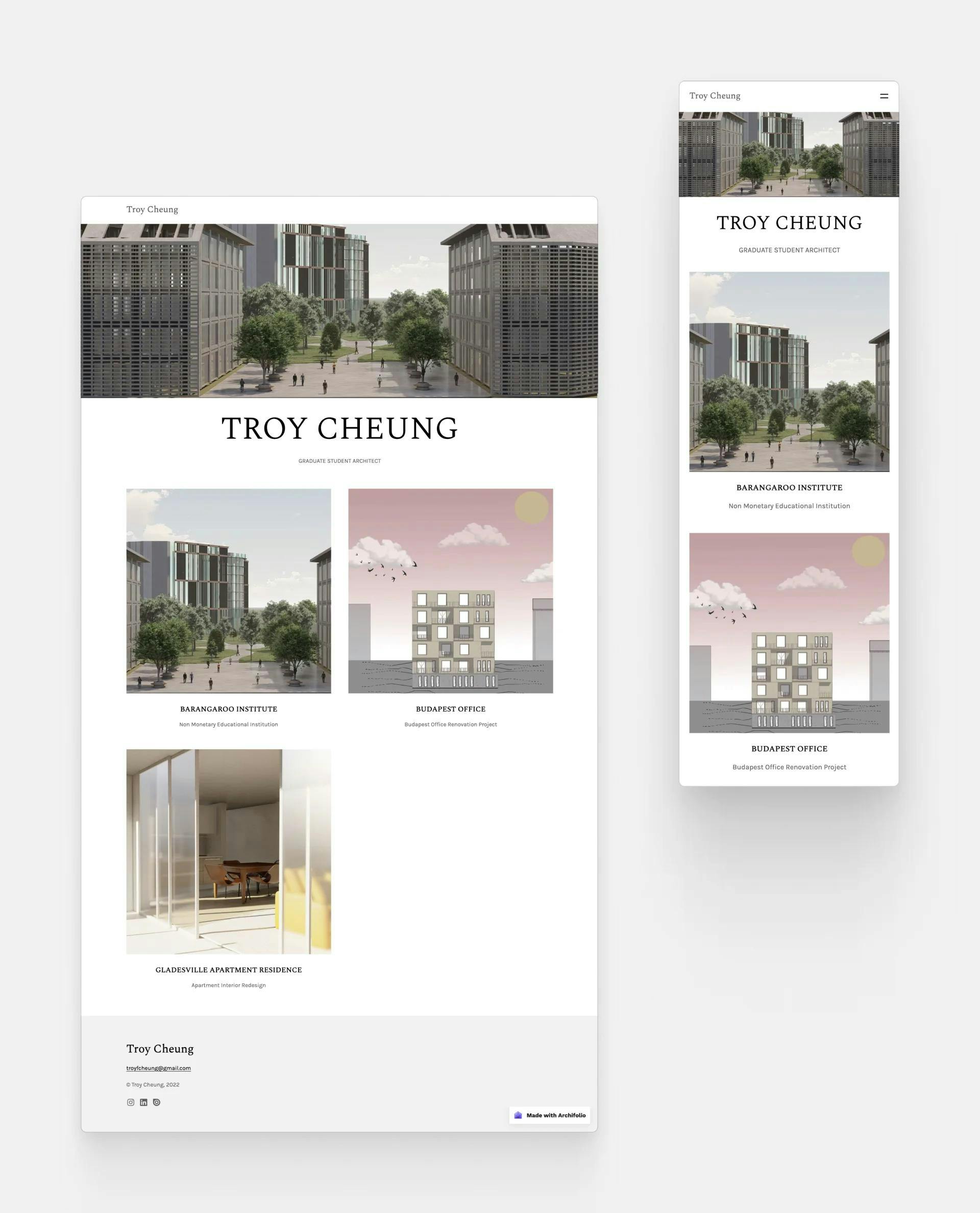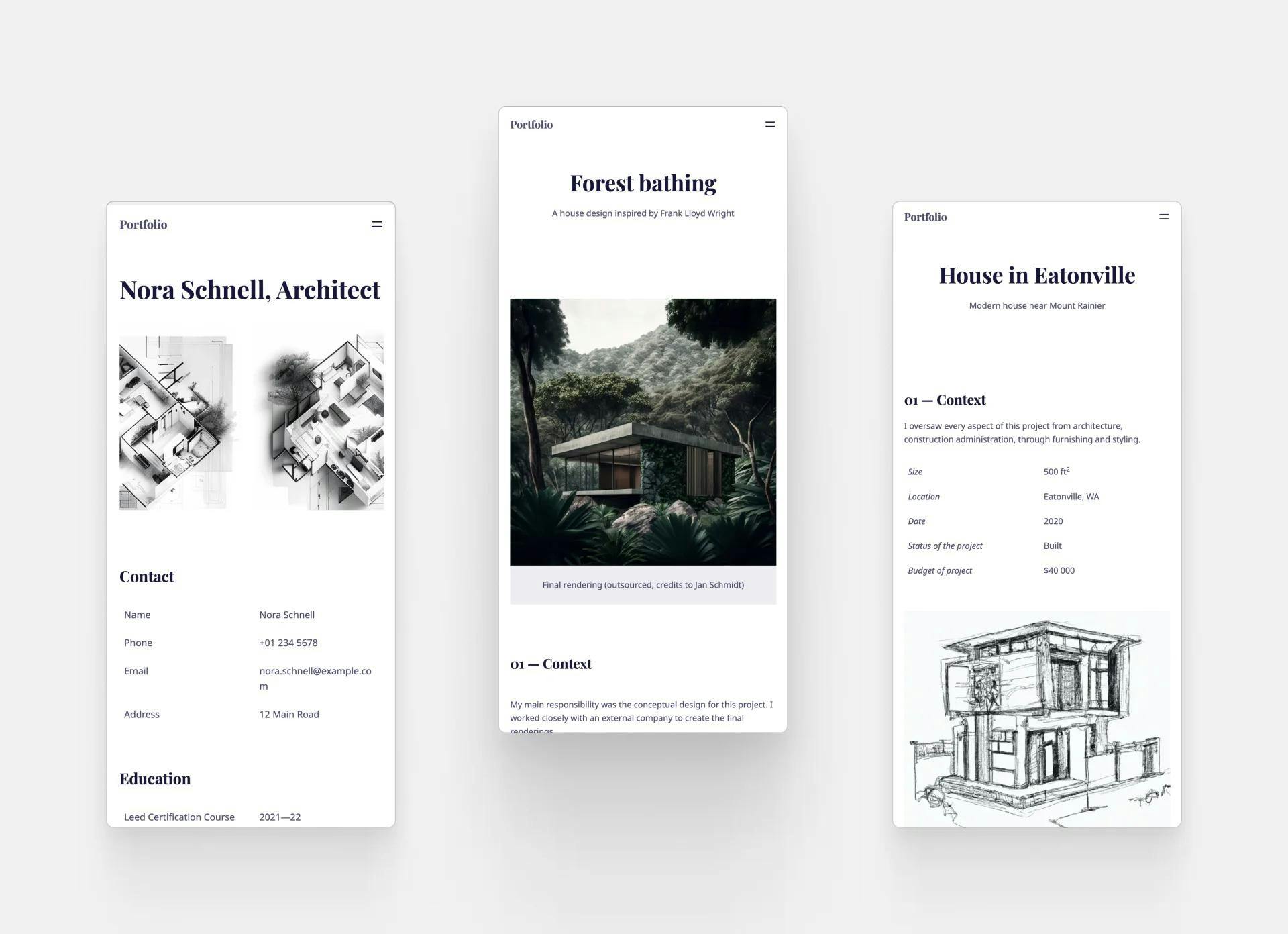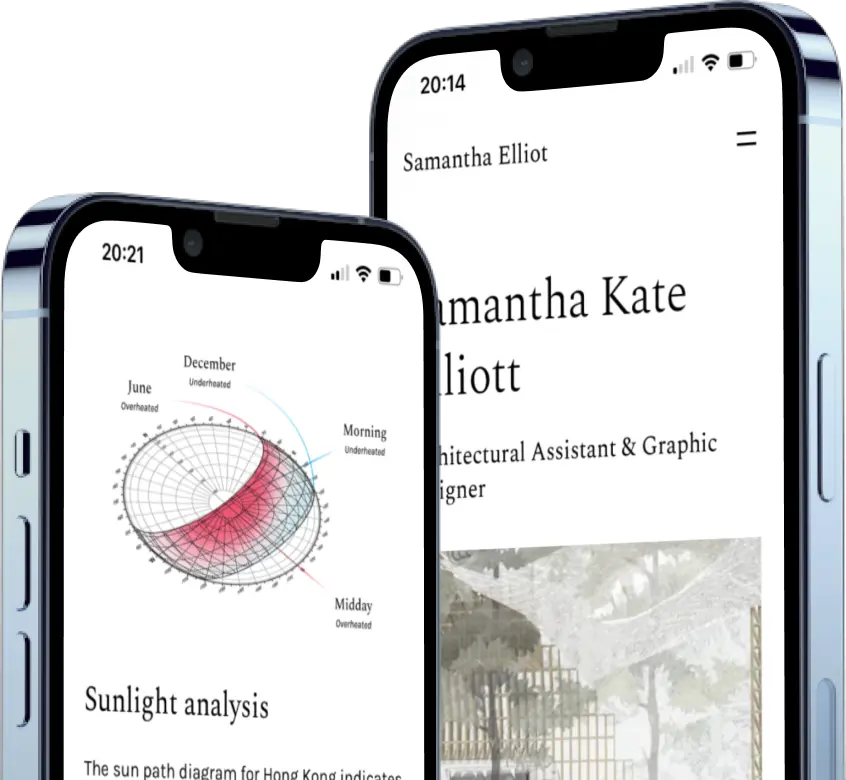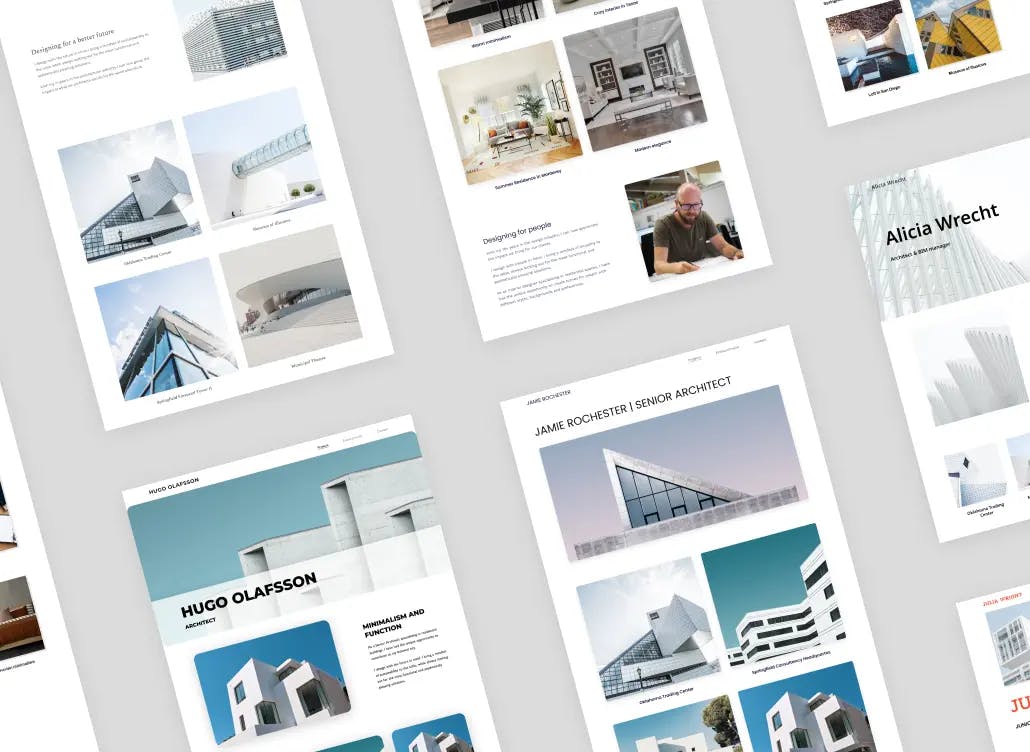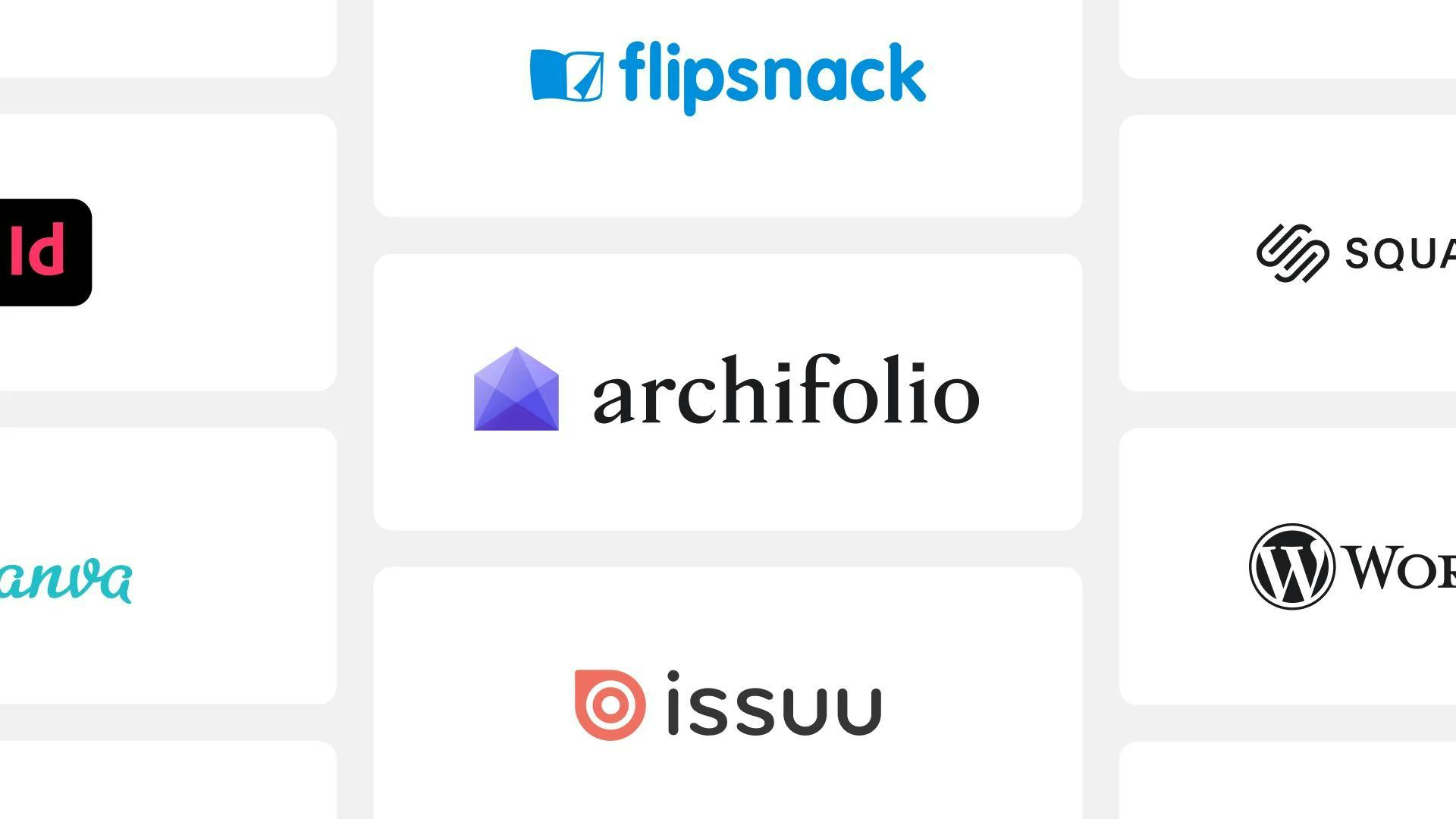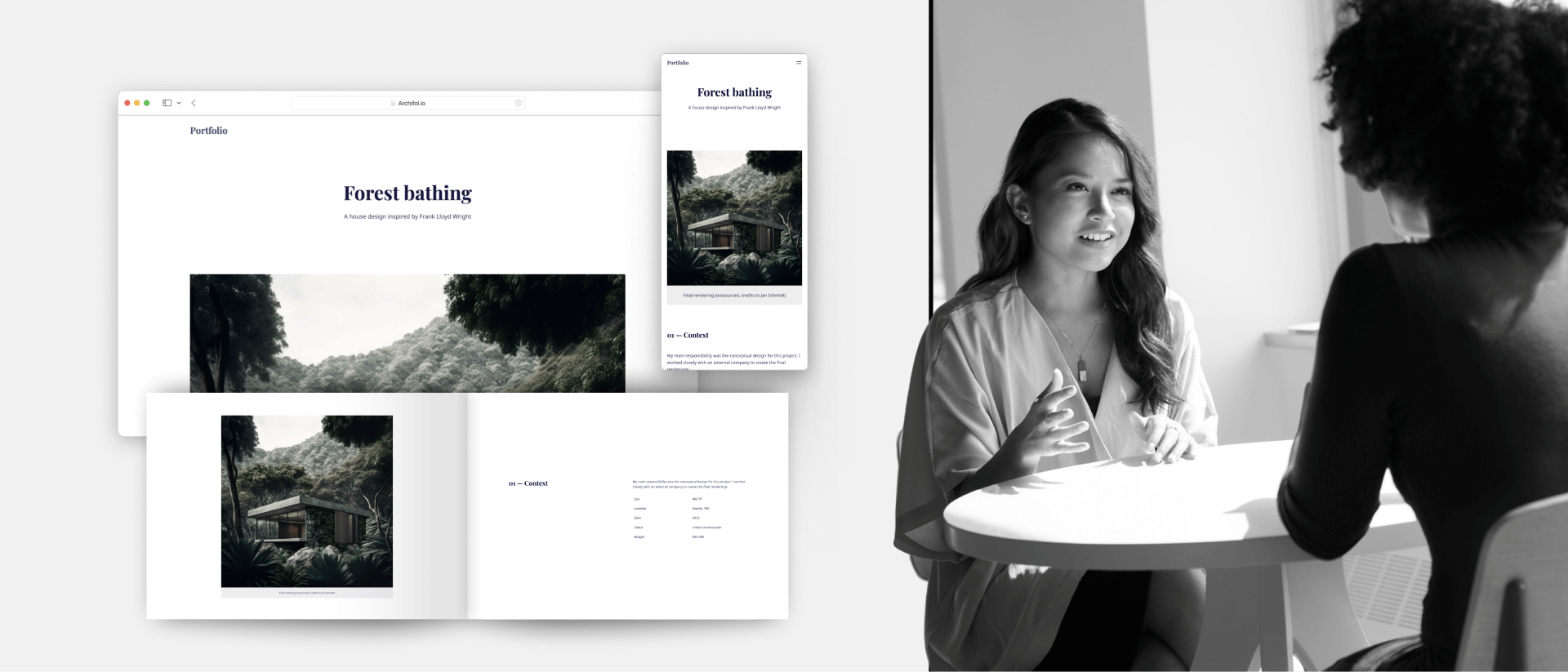
Is the date of your architecture interview creeping up? We put together this short guide to help you get that job you really want.
So grab your coffee in one hand, and your confidence in the other, and let’s get started!
Structuring Your Job-Winning Architecture Portfolio
Besides the regular discussion, the most crucial part of your architecture interview is the portfolio presentation. Preparing for this starts with putting together the ideal portfolio.
If you’re unsure about how to start, follow this tried-and-true order:
- Portfolio Cover
- Table of Contents
- Resume
- Your favorite project
- 1-2 other relevant projects
- Your second favorite project
Portfolio Cover
The first few minutes before your presentation – e.g. while everybody arrives, or you are asked some questions, etc – will be much more bearable if you are proud of your portfolio cover.
Make it eye-catching and artistic, but also informative for the maximum effect.
Troy Cheung’s portfolio cover (a.k.a. home page) created with Archifolio's Agora template.
Table of Contents
In the beginning of your presentation, you should briefly summarize what you’ll talk about. A table of contents makes it neat and organized.
Keep it simple with just the page numbers, or think about creative ways to showcase your topics.
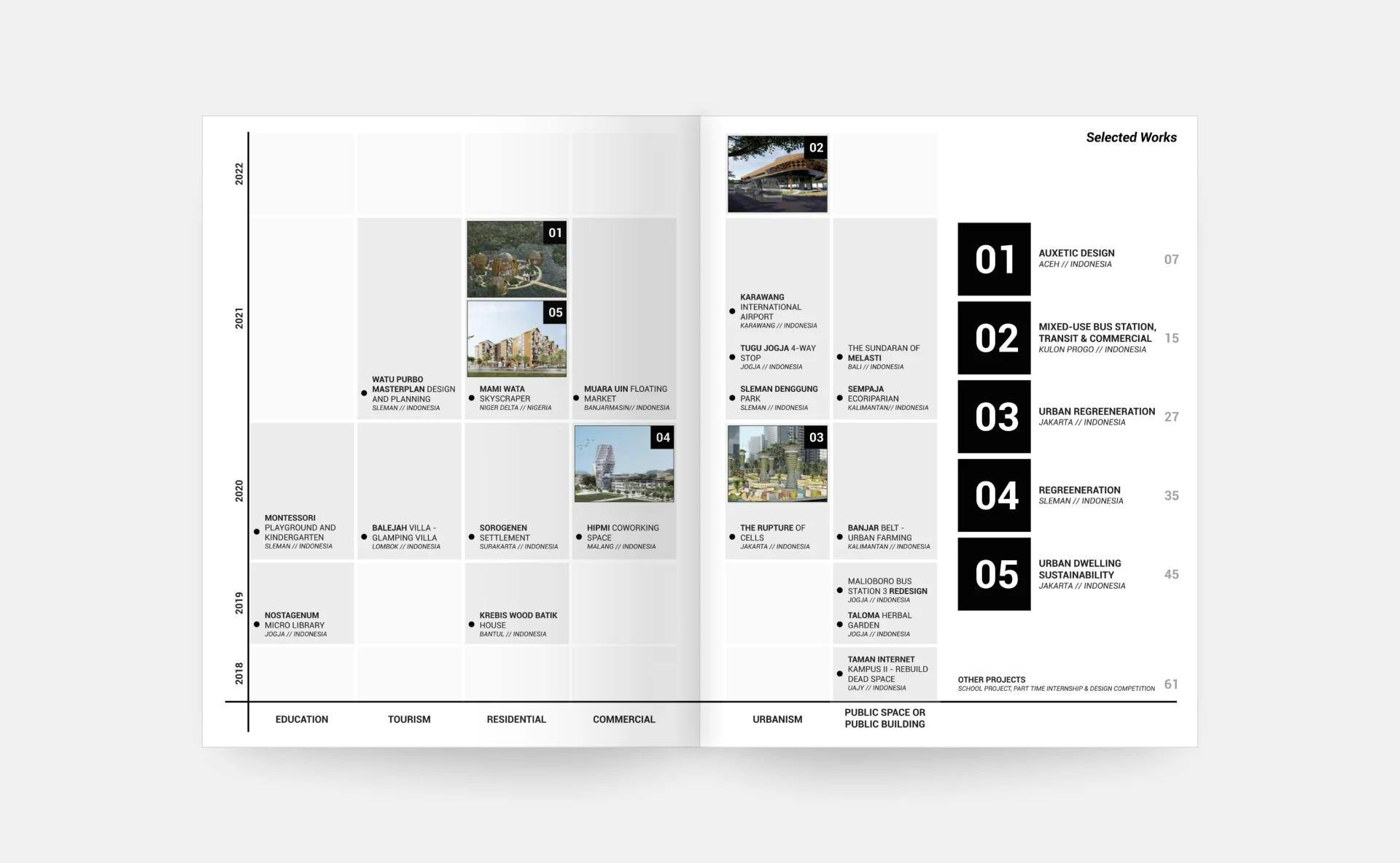
Chenna created this architecture portfolio table of contents. She included a timeline of all of her projects and highlighted the ones that she talks about in her portfolio.
Resume
Presenting yourself professionally and personally is the main event at the interview. However, chances are that everybody in the room read (or at least skimmed) your CV before they invited you in for an interview. Therefore, don’t spend much time with this, but keep it in your portfolio nevertheless.
Project #1 - Your All-Time Favorite
Now comes the good stuff, your projects. As much as your actual designs, how you talk about them matters more than you’d think.
Start with the one that you could talk about for days. Talking passionately about your work shows that you love what you do and therefore, will be a good addition to the team.
Mobile screenshots of three portfolio pages created with Archifolio
Projects #2-#3
Think about the position you’re applying to and ask yourself: What are the relevant skills or experience that project #1 doesn’t showcase?
If you have the answer, then look through your projects and see which one showcases it the best.
Even though these aren’t the ones you’re most passionate about, only include those projects that you are proud of. You’ll be evaluated based on the worst project in your portfolio.
Project #4 - Your Second Best Project
Chances are that you don’t get to talk about your last project as much as you’d want. However, ending on a wow will leave a lasting impression. Thus, finish with your second best project.
How To Ace a Project Presentation? - The 4Cs💎
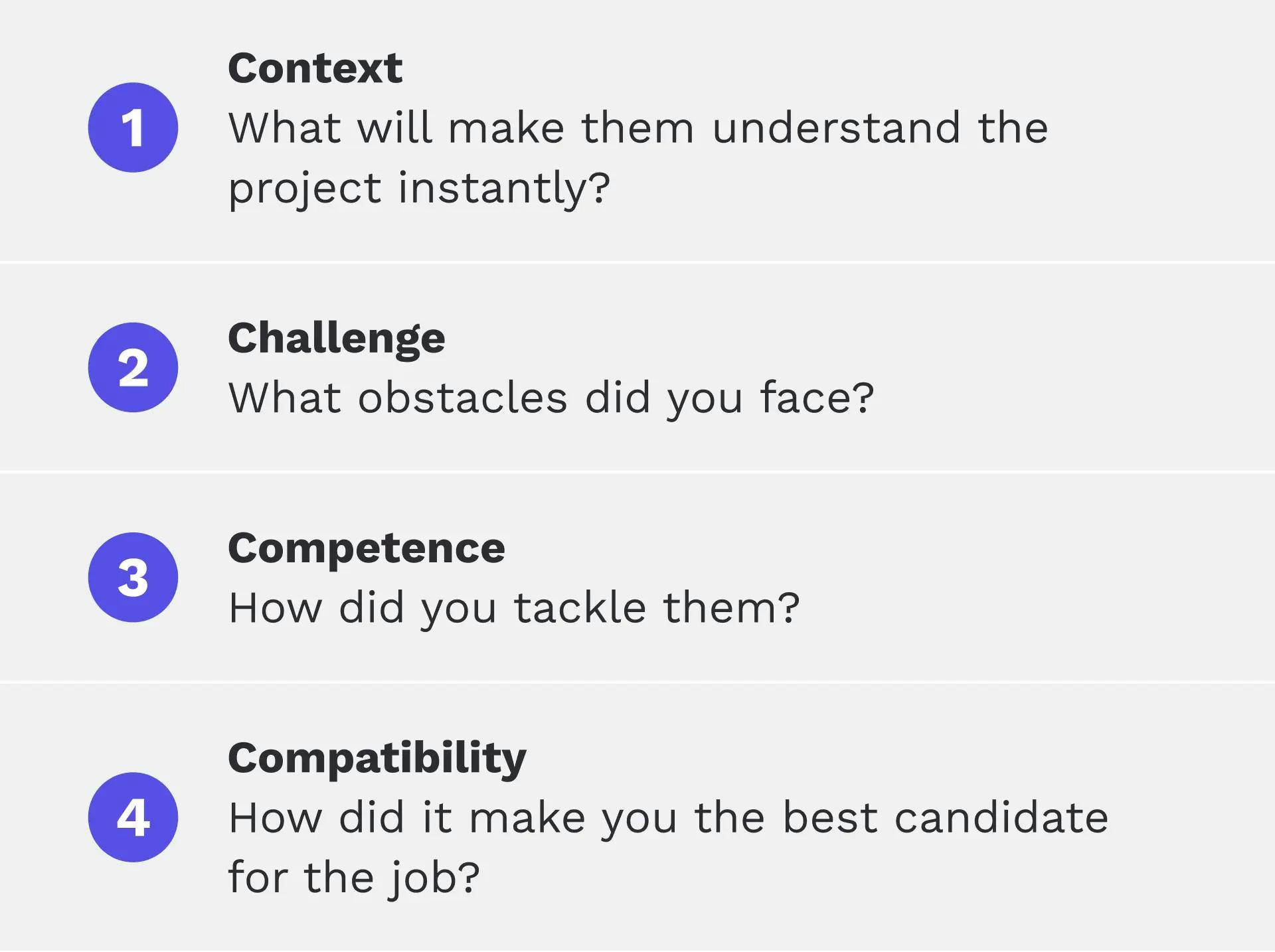
Follow the rule of the 4Cs to present your project in a way that’s understandable and memorable at the same time.
- Context - Start by setting up the scene. Think about what will help your audience understand the project instantly. (E.g. type of project, budget, size, your role, client brief)
- Challenge - What was the biggest obstacle you encountered? For example, a tight deadline, a special code or certificate, or incorporating the client’s wishes to the given site’s restrictions.
- Competence - Talk about how you tackled the above-mentioned challenge. What skills were necessary? How did you think outside the box?
- Compatibility - How could you take the learnings from this project and translate it to the position? How has this project made you the best candidate for the job?
Tips For a Successful Presentation
Choose the right format
You have a couple of options in regards to the format of your presentation. You can:
- print out your portfolio (stick to A3 or bigger),
- bring in a tablet/laptop (with a professional background and disabled notifications),
- use a projector (make sure it’s available and you know how to set it up), or
- share your screen in a conference call (for remote interviews)
Whatever the case may be, always prepare with a backup as well.
When you build your site with Archifolio, you will end up with a site that works on all devices and can even be printed or saved as a PDF
Practice out loud
Practice makes perfect and talking out loud leads to a flawless presentation. You may also ask a friend or colleague to listen to you.
Be mindful of your time
Clarify and consider how much time you have for presentation. Allocate a certain amount of time for each project and stick to it as much as you can. Remove or add projects if need be.
Come prepared
Other than your resume and portfolio, you should also prepare for any questions that you’ll likely encounter. Some of them are:
- Can you tell me a little bit about yourself?
- Why do you want to work here?
- How would you describe your work style as an architect?
- What are some of your strengths and weaknesses?
- Where would you like to be five years from now in your career?
- Describe a time a problem arose and how you dealt with it.
- What is your least/most favorite project in your portfolio and why?
- Give me an example of a time you thought outside of the box on a project.
- Provide an example of when you demonstrated *insert relevant skill here*.
- Why should we choose you for this position?
Open the floor for questions and feedback
Asking for feedback and questions will make you look confident, and eager to learn and grow as an architect. Some interviewers will ask them during your presentation, some others will sit back and listen.
Communicate that you’d like to open a discussion and actively ask for feedback.
Remote Presentation Tips
Nowadays, having an online architecture interview is more than common. But, there’s a slightly different etiquette.
Here are some of our best tips for making a winning impression in a remote architecture interview:
- Clean up - Just like you’d do for an in-person interview. But remember, the most beautiful thing you can wear is always your confidence. 😉
- Find an ideal, quiet place - Not just physically, but also digitally. Notifications off, airplane mode on your mobile on!
- Tidy up your computer - You’ll most likely share your screen at one point or another. Close unused tabs, choose a professional background image and hide the bookmarks bar.
- Find eye contact - This will definitely feel weird at first, but instead of always looking at the recruiters’ faces on your screen, look into your camera to make “eye contact”.
- Move around - Don’t leave your hand gestures out of the presentation, just because they can only see your shoulders. Also, nod often, so they don’t think your screen is frozen.
- Test your equipment - Check if your camera, microphone are working properly. Also, restart your computer well in advance, so random updates won’t affect your call.
- Visual improvements - clean your lenses, find a good angle and lighting. Tidy up your room – or at least the part that’s visible.
If you follow our tips, we’re 100% certain that you are ready to sweep the recruiters off their feet!
Still unsure about your portfolio? Give Archifolio a go and you’ll see how easy it is to build one for every occasion.
